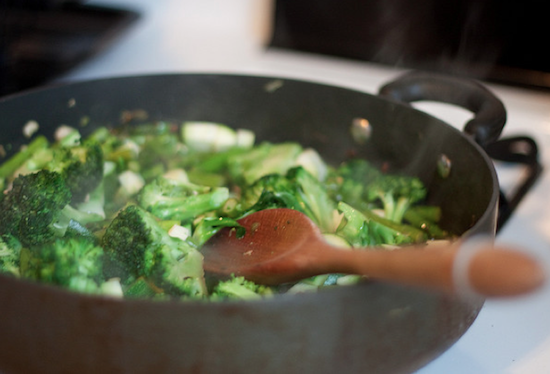Cooking Basics: How to Steam Vegetables
“This is my invariable advice to people: Learn how to cook- try new recipes, learn from your mistakes, be fearless, and above all have fun!”
― Julia Child, My Life in France
For many people, the main thing holding them back from cooking at home is the fear of learning how. Here at the Sargent Choice Nutrition Center we want to help you get over this fear by equiping you with some cooking basics. Once you’ve mastered these, you’ll be amazed at how non-threatening most recipes will become — you may even find a passion for cooking!
A couple years back Sargent Choice Nutrition Center alum Elizabeth Jarrard RD wrote a Best of the Food Web on 101 Cookbooks (click here to read Elizabeth’s review). Filled with stunning food photography and recipes inspired by whole, in-season produce, Heidi Swanson’s 101 Cookbooks is one of my go-to food blogs. Recently, Heidi did a post on steaming vegetables that gives excellent instructions and tips for using bamboo steamers. While bamboo steamers work very well, if you don’t want to go out and buy some there are other options using kitchen equipment you most likely already have.
Why steam vegetables? Many nutrients found in vegetables are water-soluble, which means that when you cook them in water those nutrients are lost to the water, decreasing the nutrition of your veggies.For this week’s Cooking Basics, we want to show you 3 methods for easily steaming vegetables.
1. Bamboo Steamer 
Image Source
I have nothing more to add to Heidi’s thorough explanation, so head on over to her post for tips, tricks, and instructions. One of her best tips is to stack the vegetables based on how long they take to steam with the ones taking the longest at the bottom.
2. Steaming Basket
While there are actual steaming baskets sold in cookware stores, you can use a heat-resistant colander or strainer. Simply pace an inch or two of water in a pot and bring to a boil. Once boiling, place the steaming basket filled with your veggies over the pot so that the basket is a few inches away from the water – make sure the veggies are not actually touching the water! Then place a lid loosely on top
3. Frying Pan:
If you don’t have a steamer, steaming basket, colander, or strainer, you can use a skillet to steam your veggies, it just requires more of your attention. Before you start, make sure your vegetables will fit in a single layer in your pot or pan. Add about ½ inch of water to the pan and bring to a boil. Once boiling, add the veggies and cover loosely with a lid, allowing some steam to escape. Keep an eye on the water level; if you notice that steam is no longer being produced, you may need to add a tablespoon of water.
Regardless of the method you choose, most vegetables take 3-5 minutes to steam, depending on how dense they are and how wide you cut them. You can steam whole vegetables as well, but they will take considerably longer, anywhere from 15-45 minutes. TLC’s website has a helpful table that shows how long various vegetables take to cook. Take a look at it and even print it out — it’s a great resource to have!
To add flavor to steamed vegetables you can use broth instead of water or season the veggies immediately after steaming. Because of this versatility, steamed vegetables go great with pretty much any cuisine, making for a quick, healthy, low-maintenance side dish. Enjoy!

